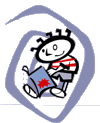 |
 |
 |
 
|
Because her mom works at an animal rescue center, ten-year-old Indie Kidd lives in a house full of foster pets and “proper pets.” Her house is a little fuller than normal, now, as her family is dealing with a population explosion of baby gerbils
which become a temporary distraction from homework for Indie and her best friends, Soph and Fee.
They are a definite magnet for her nine-year-old stepbrother, Dylan, who has a no-pet rule at his house.
When her week-long holiday comes up, Indie decides to do something interesting with her time:
she takes on a VIP, someone so important to her that she’s soon neglecting Soph and Fee. Indie skips out on their regular Saturday cushion cartoon-watching. She declines their skating invitation and, when asked to write a poem about something important to her, Indie writes about her VIP - Dylan!
Indie is stunned when Dylan reveals to her “I don’t really have any bestest friends.” When Dylan asks “Can you show me how to get friends, Indie?” she cannot help but say yes. Even though Dylan annoys Indie with his hygienic concerns and his grammar corrections, she takes Dylan on as her Very
Important Project. It immediately takes over her life as she gives one hundred percent of herself to every aspect of the job.
Dylan wants to be friends with a sporty group of guys. To make this happen, Indie makes some changes to Dylan’s clothing, hair, and conversation skills. Soon Dylan has a drawer of “urgh” clothes his is not to touch, a haircut that has much in common with a hedgehog, and conversation homework to complete. After these first few steps are accomplished, Indie has Dylan follow the boys into a burger place. She gets very excited when she sees a conversation taking place, but thoughts of success are quickly eradicated when she finds out what the boys were really talking about.
When Indie turns to her best friends for support, she finds they are not there. The rare times
when she was with her best friends, she was distracted with VIP plans, and her negligence continued to get worse from there. More than anything, Indie wanted to help Dylan meet some great friends like she had, but unfortunately,
she didn’t realize she was slowly losing her own friends in the process.
This is the second book in the Indie Kidd series; the first is called How to Be Goodish . Karen McCombie’s other series include
Ally’s World and Stella Etc. The author has fun with the words and type in Oops, I Lost My Best(est) Friends . Karen McCombie’s other series include
Ally’s World and Stella Etc. The author has fun with the words and type in Oops, I Lost My Best(est) Friends .
She uses words like snoozles and splodge and
moggies, and when she writes about Indie feeling as wobbly as a black currant jelly, the word
"wobbly" looks wobbly. The font changes when sounds go off, assignments are read, or feelings are emphasized. For example, when the bell rings to end school, a
BRIIIIIIIIIIIIIINNNNNNNGGGGGGGGG stretches across the page, interrupting the story. The word
PING shows up quite a bit in this book too, and it’s a word Indie should be paying more attention to! .
She uses words like snoozles and splodge and
moggies, and when she writes about Indie feeling as wobbly as a black currant jelly, the word
"wobbly" looks wobbly. The font changes when sounds go off, assignments are read, or feelings are emphasized. For example, when the bell rings to end school, a
BRIIIIIIIIIIIIIINNNNNNNGGGGGGGGG stretches across the page, interrupting the story. The word
PING shows up quite a bit in this book too, and it’s a word Indie should be paying more attention to!
Illustrator Lydia Monks lives in England, and her illustrations appear in the picture books
Sharing a Shell and Falling for Rapunzel. She is also the author and illustrator of
Aaaarrgghh! Spider! In Oops, I Lost My Best(est) Friends , Monks’ black-and-white illustrations of the foster gerbils cover pages eight and nine, and pages twelve and thirteen have illustrations of Fee and Soph morphed into clothes-wearing insects. Her fun illustrations can be found on almost every page, and they are sure to be a hit with young readers. , Monks’ black-and-white illustrations of the foster gerbils cover pages eight and nine, and pages twelve and thirteen have illustrations of Fee and Soph morphed into clothes-wearing insects. Her fun illustrations can be found on almost every page, and they are sure to be a hit with young readers.
By the end of this story, readers will see Dylan didn’t need to learn how to be a friend. It turns out, all he had to do was be himself all along.
|







|
| |
Tanya Boudreau/2007 for curled
up with a good kid's book |
|
|
For grown-up fiction, nonfiction and speculative fiction book reviews,
visit our sister site Curled Up With a Good Book (www.curledup.com)
|
|